The Northern Shrike Bird is known as Lanius excubitor in the scientific world. It is a type of songbirds – birds which possess a well-developed vocal organ and produce elaborate and diverse vocalizations. This particular species of shrike birds is further subdivided into nine different sub-species. In addition, being a carnivore, it is a predatory bird which feeds on smaller animals. It is found all over the Northern Hemisphere which includes regions of northern Alaska, southern and central Quebec as well as the northern part of British Columbia.
Read on to discover more information about this organism including intriguing Northern Shrike Bird facts.
Physical Traits
The Northern Shrike Bird is medium sized. Its unique physical traits are discussed below.
- A fully grown, adult bird typically measures about 10 inches in length with its weight ranging between 60 and 70 grams.
- It is pearl grey on the underside while its back is dark grey in color.
- White patches are found on its black wings which measure around 4.5 inches in length. The entire wingspan can be between 12 and 14 inches.
- The tail of the bird is around 4.3 inches in length. It is black in color having white corners.
- It possesses a large, hooked bill and a narrow mask across the face which is black in color. In the case of females, this mask is not very highly distinctive.
Diet and Feeding Habits
It is a predatory bird which hunts for its food. The major components of its diet are small vertebrate animals as well as large invertebrates. It is capable of killing prey which is almost the same in size as itself. Mostly, the bird feeds on other small birds, large insects and rodents like voles. It is also known for killing and consuming snakes, lizards and frogs.
In order to look for prey, the bird perches on one of the topmost branches of the tree. It possesses very keen and sharp eyesight. Therefore, it can detect the slight movements in an instant. For terrestrial preys, it glides down lightly. On the other hand, in order to catch a flying prey, the bird swoops down like a hawk.
The bird may use one of the following tactics in order to catch prey.
- It rummages through the underground in order to look for insects, rodents or other types of terrestrial prey.
- It flashes its wings or markings on the tail which causes small animals to be lured towards them or scared into coming out from hiding places.
- The bird mimics the vocalization of other songbirds in order to entice its prey.
Nest Building and Protection
The bird’s nest is built with help from both the genders. It consists of different materials including twigs, grass and moss. The structure is loose and bulky in the form of an open cup. The inside is lined by bird feathers as well as animal hair. It is usually built on low trees or large shrubs. Most commonly, the nest of a Northern shrike bird is found on willow or spruce, located at a height of six to fifteen inches above the ground.
The female lays around four to seven eggs in the nest at a time and incubates them for a period of fifteen to seventeen days. When the young ones hatch out, they are fed by both the parents. They are ready to leave the nest in about twenty days.
The nest is protected by the male who uses its complex vocalizations for defending the nesting territory. These sounds may also be used to attract a mate to the nest.
Interesting Facts
Here are some interesting Northern shrike bird facts.
- There is no conspicuous difference between the two genders of the bird. They are of the same size and color with almost similar physical features.
- The hooked bill of the bird is a useful tool for killing prey. It is used to stun the victim and eventually kill it from repeated blows.
- The bird is commonly known by several other names including the great grey shrike and the northern grey shrike bird.
- The scientific name of the bird – Lanius excubitor – literally means “butcher watchman”.
- The bird migrates in mid-fall to warmer regions.
- It kills more than it can eat at a time, impaling the surplus on thorns to create a food cache.
- The songbird mostly uses its vocalization in order to attract a mate. The process of mating is usually initiated by the male bringing a prey to the female.
- The common cuckoo bird often acts as a brood parasite of the great grey shrike by laying its legs in the nest prepared by the latter. However, due to some mysterious reasons not yet discovered by scientists, this stopped taking place since the 1970s.
- The male shrike uses its food cache to impress and attract potential mates. To them, it is a display of their fitness and successful hunting endeavors.
- The young ones are taken care of by the parents for three to four weeks even after leaving the nest.
Latest Birds
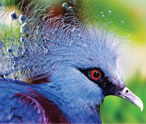
Victoria Crowned Pigeon
With its name...read more
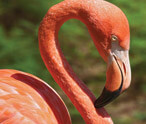
Information About Flamingos
Flamingos are...read more
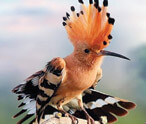
Hoopoe Bird
Famous for its distinctive crown of...read more
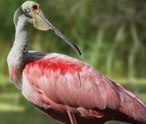
Roseate Spoonbill
The beautiful Roseate Spoonbill...read more
Latest Mammals
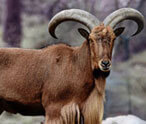
Types Of Goats
Goat is a mammal that belongs... read more
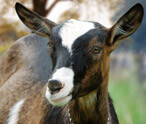
Goat Facts
A domesticated form the wild goat of...read more
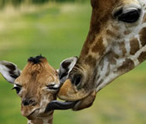
Giraffes Facts
Giraffes are creatures with extremely...read more


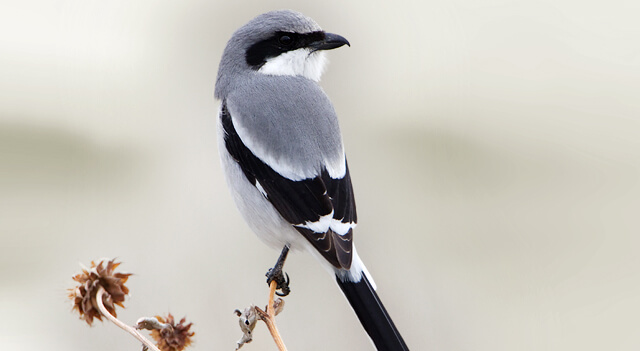


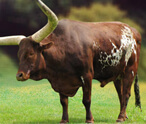

















Largest Birds of Prey in the World by Size and Weight
Also called raptors, the birds...
List of Birds That Fly in V Formation
Did you ever feast your eyes on the amazing phenomenon...
Birds of Prey List
A bird of prey is also known as a raptor or a hunter. It belongs to the group of...
Millipedes Vs Centipedes
Centipedes and millipedes are both arthropods from the group...
Difference Between Warm Blooded and Cold Blooded Animals
Every living organism...
Top 10 Extremely Dangerous Insects
The insects have been grouped in class 'insecta' of...
Sheep Vs Goat
The goat and the sheep are related to each other through the same family. They...
Animals with Blue-colored Blood
Humans and other vertebrates have red-colored blood running...
Birds, Mammals And Reptiles
Before coming to the question of common ancestry of birds...